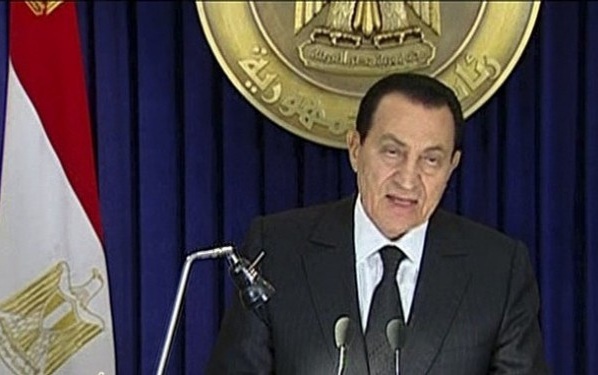In Syrian author Zakriya Tamir’s short story, “Tigers on the Tenth Day”, the reader is presented with a storyline all too familiar to readers of Arabic literature of the last half-century and followers of Middle Eastern politics of the last half-century: that of subjugation and dehumanization under harsh autocratic rule. The tiger, separated from his native wild forest, is gradually brought to heel under the commands of the harsh and sinister tamer, who utilizes tools of denial and oppression to force the tiger’s obedience. In the end, the tiger becomes a present-day citizen and the cage around him takes the form of a modern city.
Part of the tamer’s distinctive style involves his use of high-register khitab speech for his official proclamations on the state of the tiger. He stands outside the tiger’s cage, holding court with a group of students in oppression. Highly formal Arabic, as compared to the more relaxed style in most modern writing and the colloquial of the street, is a sound to behold. The difference is hard to represent in English – the effect would be something like putting a 17th Century Puritan preacher’s Sunday sermon side-by-side with a Tom Clancy novel (or the realistic dialects of Mark Twain’s works, to capture the full khitab to colloquial gap). The tiger claims he cannot even understand this archaic speech. Take this proclamation from the tamer to his students, rendered as best I can:
“O you citizens… previously have we made clear, on numerous occasions, our stance on all crucial matters, and this clear, resolute stance shall not be changed whatever the machinations of enemy powers, and in faith we shall prevail.”
Compare this to former President Hosni Mubarak’s speech on February 2nd, in the midst of the revolution that would eventually topple his 30-year autocratic rule.
“The nation remains. Visitors come and go but ancient Egypt will remain eternal, and its banner and safekeeping will pass from one generation to the next. It is up to us to ensure this in pride and dignity.”
Once one adds in the formal pronunciation in Arabic, this speech becomes something far abstracted from anything the average Egyptian would encounter on the streets of Cairo. Certainly, there is a time and a place for formal speech, but Mubarak’s main communications during the revolution were highly formal statements from behind a podium. Just as the tamer’s high register in Zakriya’s story spoke not to the tiger, but to his attending students in subjugation, this speech is not geared to the average Egyptian so much as it is aimed at reassuring foreign governments, both in the Arab world and abroad, that this storm, too, shall pass.
While the people of Egypt could certainly understand Mubarak’s speech, he clearly was not talking to the people; rather, throughout the turmoil he continued to talk at them. Mubarak remains outside the cage, pronouncing at large while ignoring the tiger’s attempts to break out. In the end, many Egyptians realized the emptiness of Mubarak’s words as well, culminating in his final decision to cede power on February 11th. The tiger was free.
In light of the above, it was heartening to read of and listen to Essam Sharaf, the new Egyptian PM, address the crowds massed at Tahrir Square here on Al-Jazeera. He spoke beside a prominent member of the Muslim Brotherhood, signifying the new openness of government by coming out to address the people firsthand in the streets. He spoke fully in colloquial, engaging the people in a way that Mubarak’s distant proclamations could never do. He spoke in the midst of a crowd of thousands, trusting the crowds in a way that Mubarak could not even dream of. It was a statement of accountability to the people, and the start of a better relationship between the government and the governed. This will be all the more necessary in the days ahead as the Egyptian government faces the challenges of transitioning to a stable, democratic rule even as it faces challenges and protests from all corners of the political arena, from feminist groups to Salafi Islamists.
It will be a relationship worth watching. The tiger has broken free of the cage. Now we watch to see where it goes.
Written by Andrew Lieber, a Brown University student who studied at the Middlebury C.V. Starr School Abroad in Alexandria, Egypt.















